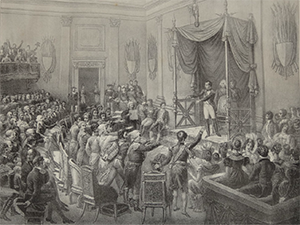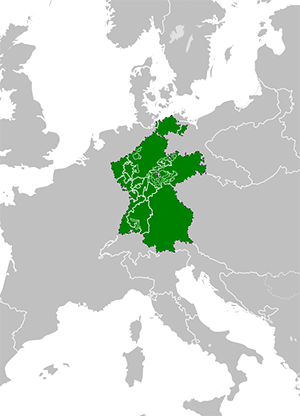The Confederation of the Rhine
The Confederation of the Rhine was a political entity created by Napoleon Bonaparte in 1806, during the War of the Third Coalition. 
Baden, Bavaria, Hesse-Darmstadt, and Württemberg had been allies of France during the War of the Third Coalition. After the defeat of Austria at Austerlitz in December 1805, Bonaparte strengthened that alliance through a handful of marriages and granting of titles. At first, the Confederation contained 16 German states, which joined on July 12, 1806; another 19 joined later. At its height, the Confederation contained 15 million people. On August 1, 1806, the original member states left the Holy Roman Empire. Just five days later, Emperor Francis II declared himself as emperor of Austria only. The Holy Roman Empire, which had existed for a millennium, was no more. The new head of the new organization was the Prince-Primate. The first person to hold that office was Karl Theodor von Dalberg, who had been Arch Chancellor. The Prince-Primate was also President of the College of Kings. The Confederation nominally had a Diet, or parliament, over which the Prince-Primate presided. (It never met.) Also created was the Council of the Princes. The capital was at Frankfurt. Presiding over all of that governmental structure was Napoleon, who took on the role of Protector. For all of its political structure, the Confederation of the Rhine was designed to be a buffer state between France and Austria (and the rest of Europe), and the residents of that Confederation certainly supplied the French Empire with manpower and money. In 1808, the other 19 states joined, bringing the Confederation total to 35 former German states. The member states were these:
The Confederation continued in its buffer state capacity until 1813. After the Allied victory at Leipzig in that year, many of the former German states joined the Sixth Coalition, declaring war on France. The Allies dissolved the Confederation on Nov. 4, 1813.
|
|
Social Studies for Kids
copyright 2002–2026
David White



 Anhalt-Bernburg
Anhalt-Bernburg
